100 Years at North Beach
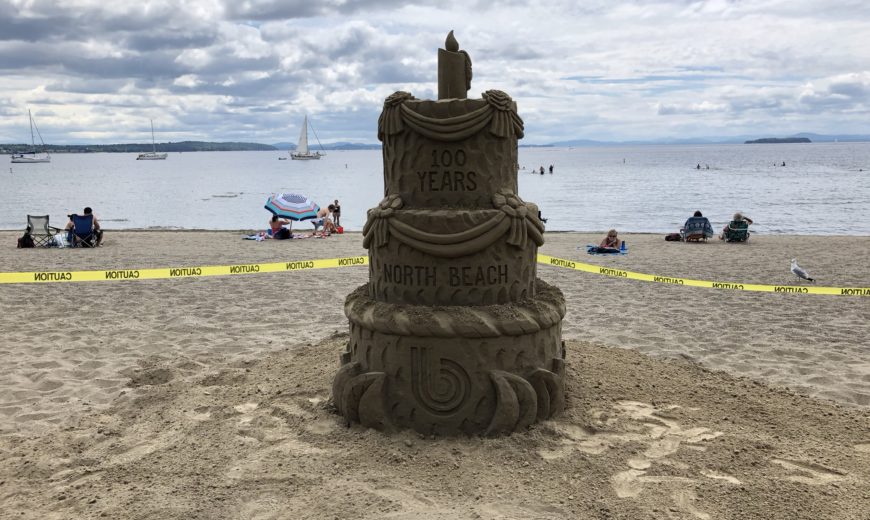
For a century Burlington residents have made North Beach their favorite spot to relax in the summer. The beach has seen its fair share of changes and renovations over the years, but its spirit has remained untouched. In celebration, we at BPRW would like to share its history with you.

North Beach, photographed around 1910
North Beach, or Burlington Beach as it was known, had humble beginnings. Desire for a clean public beach began around 1900, when many beaches along Champlain had become polluted by sewage and industrial runoff. The property was purchased in 1918, and the first bathhouse was finished in the following year. Other improvements such as water plumbing, fire extinguishers, tables, insurance, cesspool, telephone lines, and heating oil were purchased to make the beach a gem of modern technology.
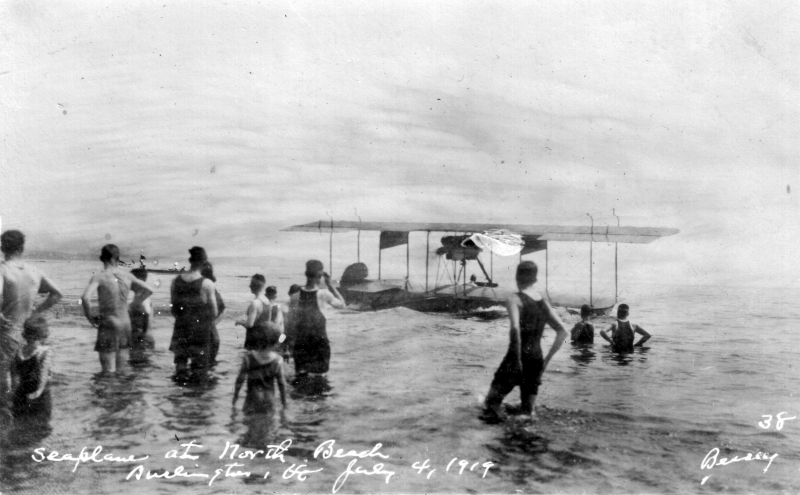
The two-seat biplane that marked the opening of the beach
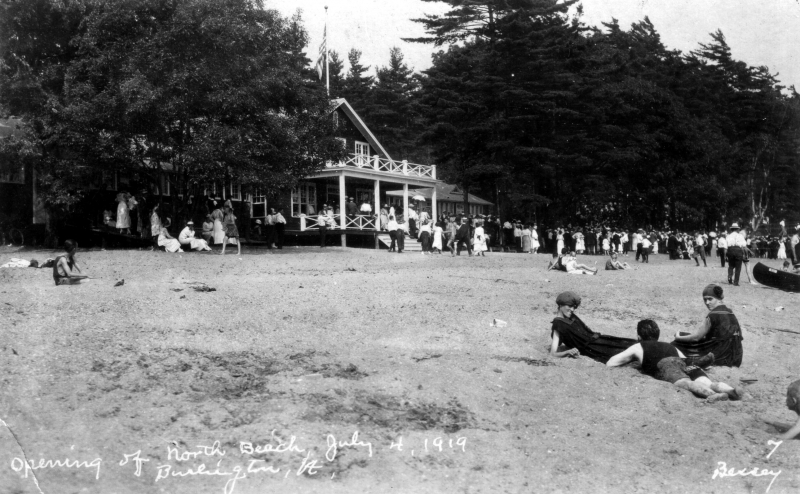
North Beach on opening day with the original bath house
North Beach officially opened on July 4, 1919 as a way to honor soldiers returning home from WWI. The celebration was the beginning of several Burlington traditions, including a fireworks celebration and airshow. The seaplane chosen was one of the first planes to ever fly over Burlington, and the first to make a landing in the city. The pilot offered air tours to one lucky resident at a time, allowing people to see their city with a bird’s eye view for the first time.

Aerial view of Burlington, similar to what residents would have seen from the seaplane. (1940)
Popularity of the beach increased over the first decade, and more upgrades were made to keep up with growing demand. Institute Road was improved to allow for safe foot travel to the beach in 1923, and tennis courts were completed in 1929. Plans were in place for further expansion when The Great Depression hit America.
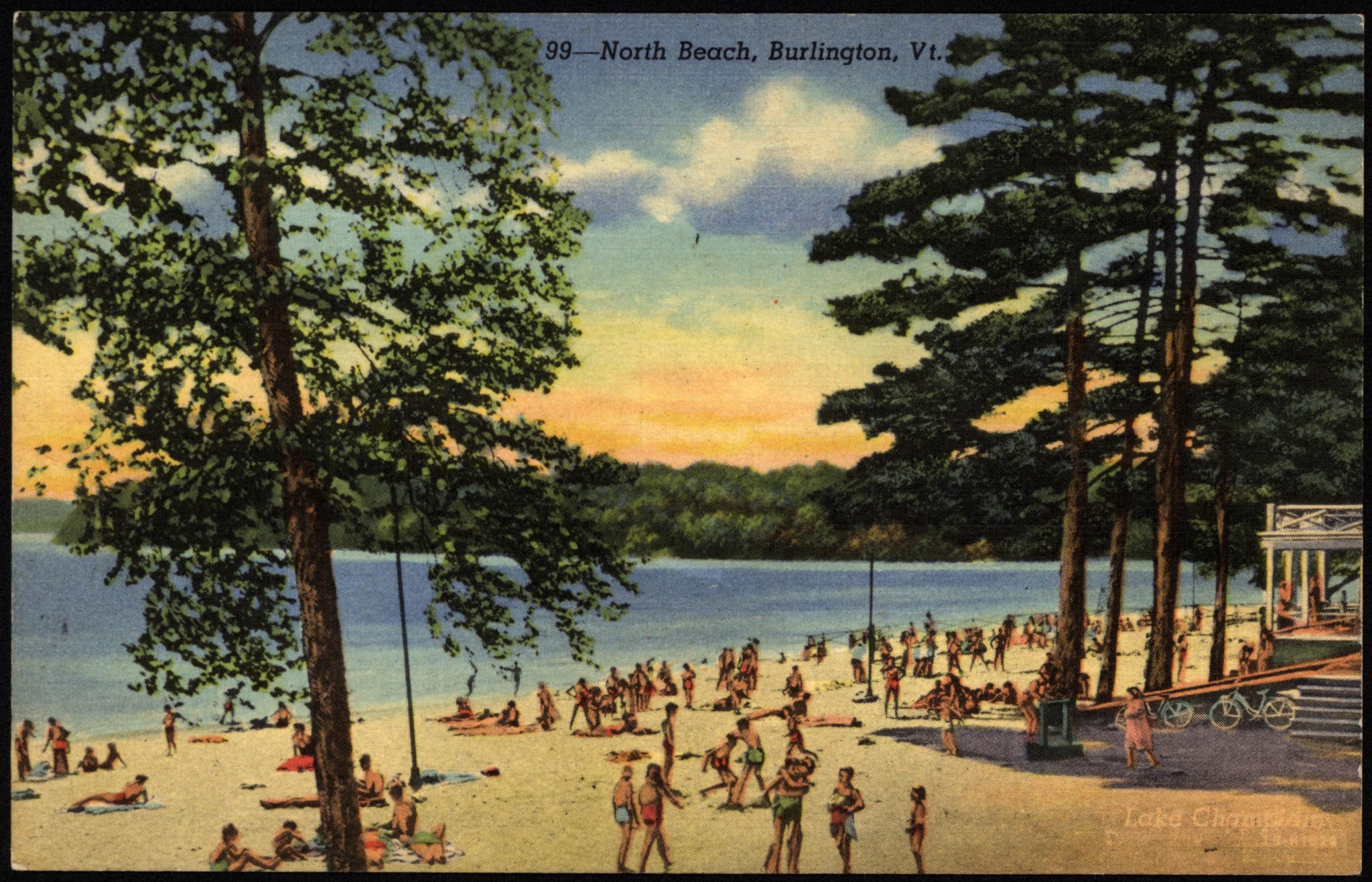
Postcard of North Beach printed in the 1930’s
As the economy sputtered and thousands lost their jobs, the dreams of expanding North Beach dried up with its revenue stream. However this didn’t diminish the beach’s popularity, as thousands of Burlingtonians used their newfound free time to enjoy Lake Champlain. The Parks Department was able to use President Roosevelt’s Works Progress Administration to make some much needed upgrades to the facilities, such as new power lines and a sewage disposal field.
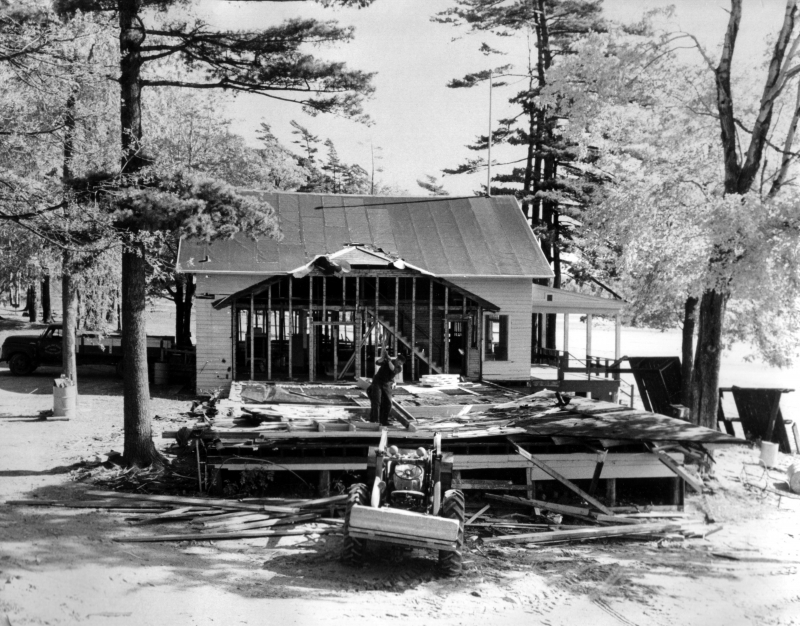
The original bathhouse, partially torn down to build the new facilities
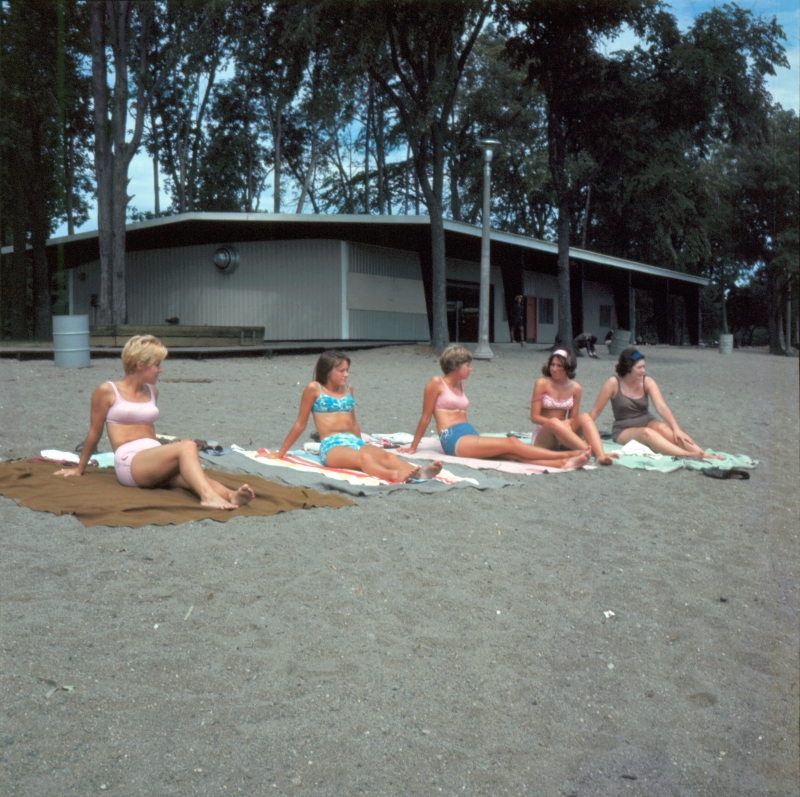
Beach-goers lounge in front of the new bath house, 1975
Following WWII, the facilities were maintained while a campaign to redo the original bathhouse gained more and more traction. In 1964, after standing for 45 years, the original wooden facilities were torn down and replaced with a modern structure capable of handling the rising popularity North Beach had gathered.

North Beach circa 1960
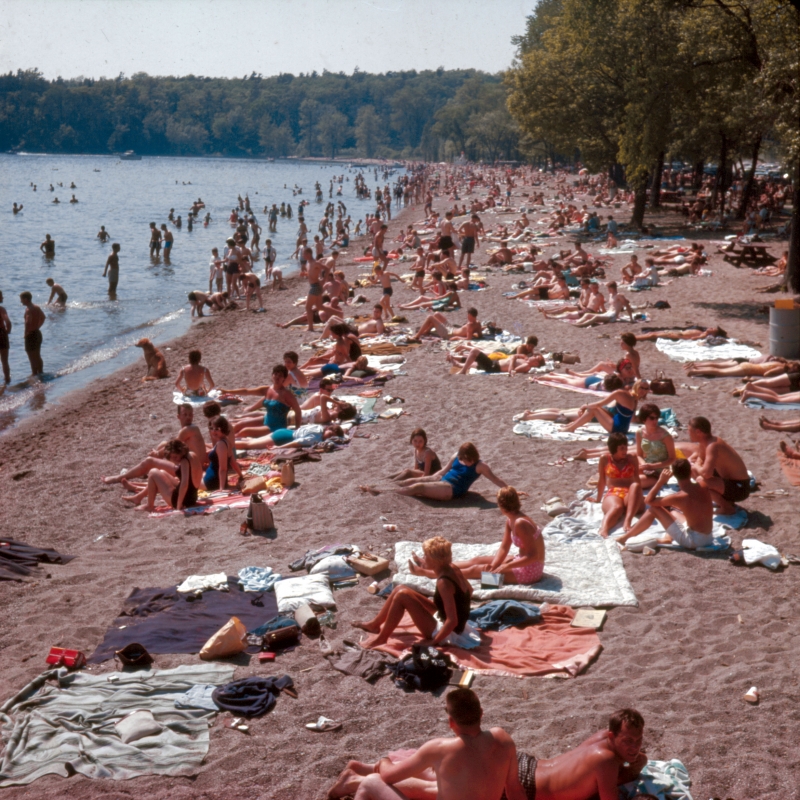
A busy day at North Beach, 1975
Between the ever increasing popularity of the beach itself and the rise of recreational camping, North Beach exploded during the 1950’s and 1960’s. In 1967 the beach was the destination for 70,000 people taking in the beauty of Champlain, and over 100,000 during the next year. It was at this point that enough money was collected at North Beach that it began to fund other public beaches and parks in Burlington.
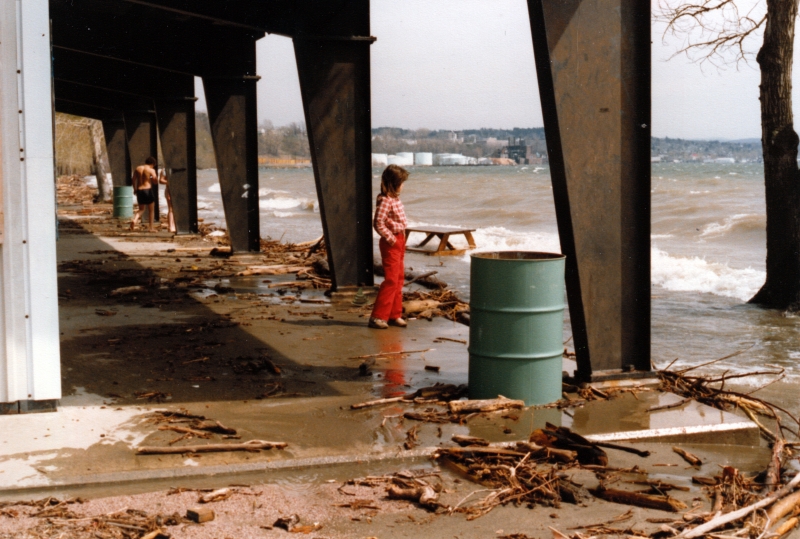
A women watches the high water in Spring, 1983
The beach ran into rough times during the early 1970’s due to high bacteria levels in the lake, luckily this did not last long and North Beach thrived throughout the 1970’s and 80’s.

North Beach today
The beach continued to improve over the 80’s and 90’s, with modern technology replacing many outdated parts of the facilities. The 1964 bathhouse was finally replaced in 1997, which still stands today. North Beach continues to be one of Burlington’s most popular summer spots, hosting tens of thousands of residents and tourists each year.
We would like to thank The University of Vermont Historic Preservation Program, Erica Donnis from the Champlain College Special Collections Department, and Mary O’Neil from our Planning Division for their generous and eager contributions to our research.
